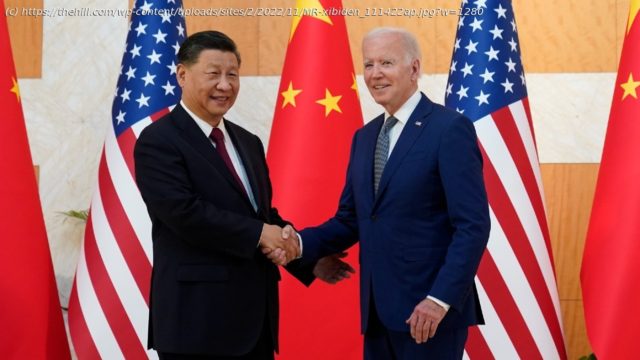Array
“Jaw, jaw, is better than war, war,” Winston Churchill advised in 1954 as the Cold War hardened. So toxic is the downward spiral of the United States’s freefalling relationship with China that just getting to the jaw part was quite an ordeal. Now that the summit between President Biden and Chinese President Xi Jinping is behind us, did it halt the drift toward conflict and put U.S.-China ties on a path toward détente?
I suspect that, at best, détente is somewhere over the horizon. But both leaders conceived the first face-to-face meeting as an effort to “put a floor under the relationship,” as U.S. officials put it. In the aftermath of House Speaker Nancy Pelosi’s (D-Calif.) August trip to Taiwan, U.S.-China ties hit a new low, as Beijing shut down all official dialogue, from climate and trade to military talks.
Both Xi and Biden seem concerned about raging nationalisms in both nations spurred by tit-for-tat demonstrations of resolve like the Pelosi Taiwan visit and China’s over-reaction to it. It seemed to overwhelm the interdependence of the world’s two largest economies, greenhouse gas emitters and military powers.
While none of the core issues – Taiwan, technology, trade – were resolved in the three-hour meeting, both leaders indicated a desire to manage differences where they cannot be resolved. Xi sent a group of prominent Chinese business leaders, former officials and intellectuals to New York to meet with a similar U.S. group organized by former AIG CEO Hank Greenberg in a backchannel effort to restart exchanges to find common ground.
Already, U.S. and Chinese senior officials have renewed diplomacy: U.S. Trade Rep. Katherine Tai and Secretary of Defense Lloyd Austin met with their Chinese counterparts, as did climate envoy John Kerry, renewing modest cooperation. Secretary of State Antony Blinken will head to China in coming months as well.
Few expect trade or national security concerns to be resolved anytime soon. But U.S.-China trade – despite sanctions, tariffs and growing tech export bans – rose to $657 billion in 2021, up from the previous year, and trade in 2022 is projected to increase by 8 percent.






